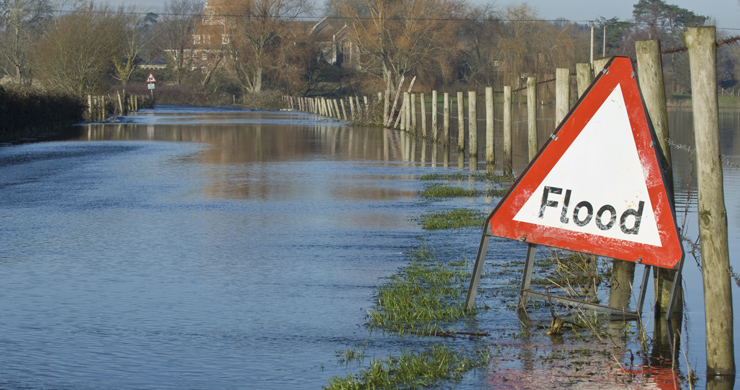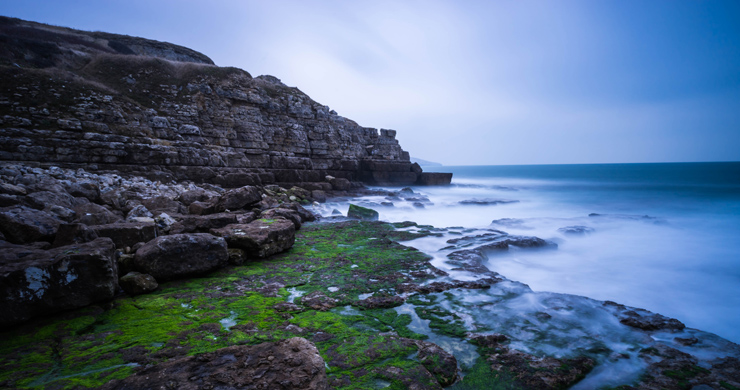Coastal Processes
It is impossible to understand the risks of coastal flooding and also cliff collapses that have happened in recent years without understanding the processes at work along our coastlines. The main coastal processes that we need to understand are:
- Erosion
- Transportation
- Deposition
Erosion is the wearing away of the earth surface and the transportation of the eroded material elsewhere where it will be deposited. There are four main elements of erosion:
- Wind
- Waves (Coastal)
- Rivers (Flowing water)
- Ice
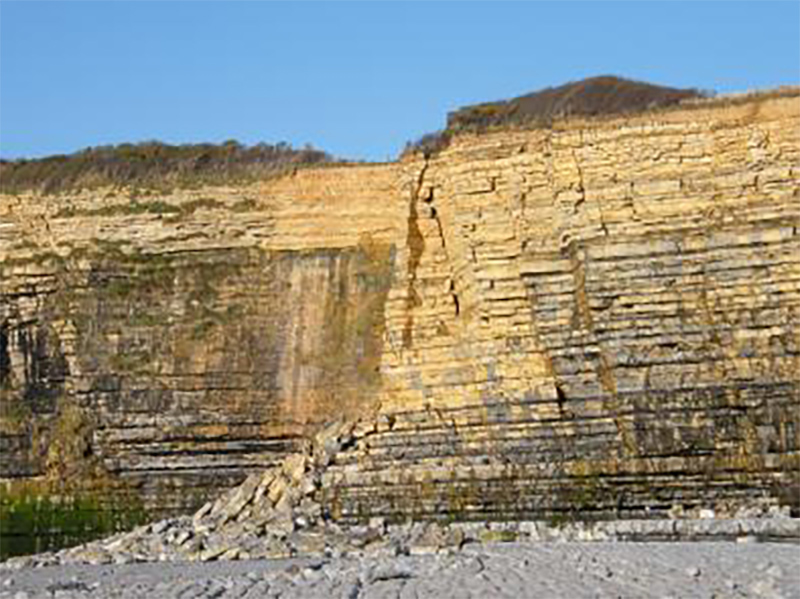
Processes that break up the surface or rocks but do not involve transportation are called weathering.
Weathering is also very important along coastlines, often weathering breaks up the coastline especially of steep cliffs resulting in piles of material at the base.
This material is then eroded by waves and transported elsewhere before being deposited.
Mostly erosion does not affect people, but in 2011 a rock fall at Porthkerry Leisure Park, Barry, Vale of Glamorgan left fifteen caravans dangling over the edge as the cliff underneath collapsed.
In April 2014, an around 150 tonnes of the cliff face collapsed, near Penarth pier with many people around but luckily not injured.
However erosion damaged many of our sea defences in December 2013 and January 2014 which left us with an £8.1 million repair bill.
Waves
Erosion on our coastlines comes mostly from waves. There are many different types of wave but we can put all of these into two main categories:
- Destructive Waves
- Constructive Waves
Destructive and constructive waves can cause us problems but for different reasons.
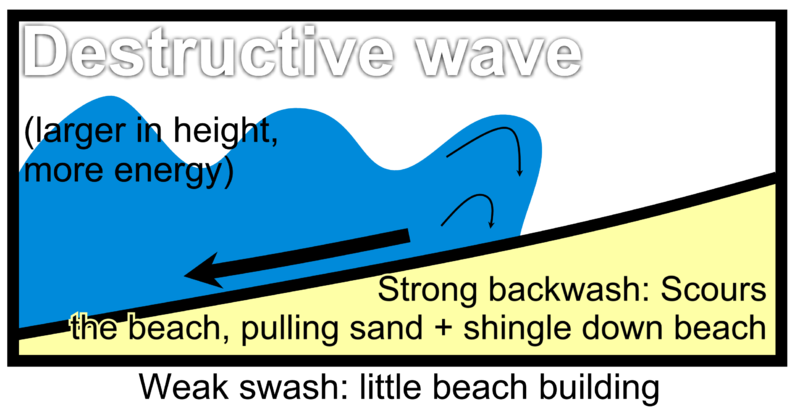
- Destructive waves are normally steep waves which collapse almost vertically on to the shore or beach.
- This can initially dig up the beach and then most of the wave moves back down along the beach in what is called the backwash.
- Only a small part of the wave will move up the beach n what is called the swash.
These terms are very important:
- Backwash – the part off the wave which moves back down the beach.
- Swash the part of the wave that moves forward up the beach.
- Most destructive waves are made close to the shore by the winds blowing locally.
- When the wind blows over water some of the energy is transferred to the water and this energy moves as waves in the same direction as the wind.
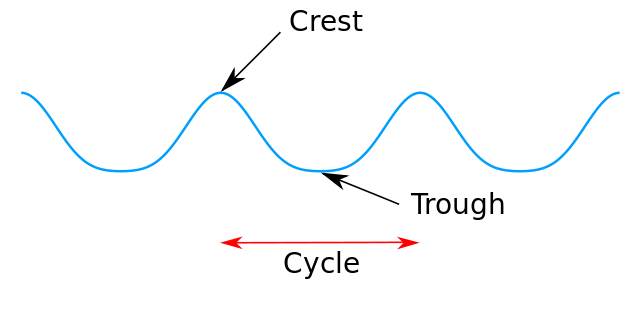
The terms used to describe waves are:
- Crest – the highest point of a wave.
- Trough – the lowest point of a wave.
- Wavelength – the distance from crest to crest or from trough to trough.
- Wave height – the vertical difference between the trough and the crest.
Destructive waves cause most of the damage done on our coastlines.
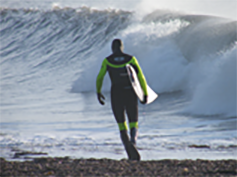
Constructive waves have a much longer wavelength and tend to have a lower height than destructive waves.
Most constructive waves however are not created locally but by winds and storms which were sometimes 1000km or more away.
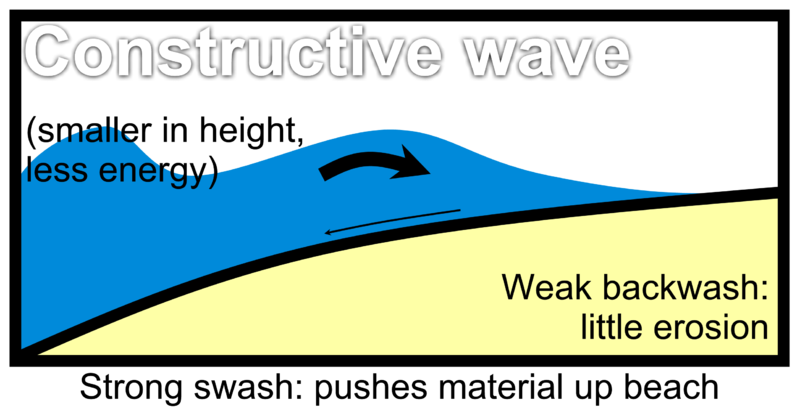
Waves can travel enormous distances; the distance a wave travels is termed its fetch.
Some parts of the coastline of Wales point in a direction in which there is no land for thousands of km. Waves created by powerful storms off the tropical coastlines of South America can travel in a line for days or even a week or more to reach Wales.
Surfing in Wales
Normally these waves are very useful especially for tourism as these are the right waves for surfing. As they break their energy spills forward creating a powerful swash which can move material up a beach.
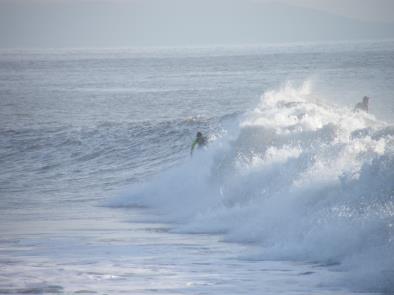
Beaches like Newgale are magnets for surfers and just behind the beach is a surf shop/school as well as a summertime campsite, pub and café.
Throughout summer and winter, cars and vans will be seen with boards and kayaks on their roofs; these are a blessing for local businesses bringing visitors throughout the year, but they can cause problems too.
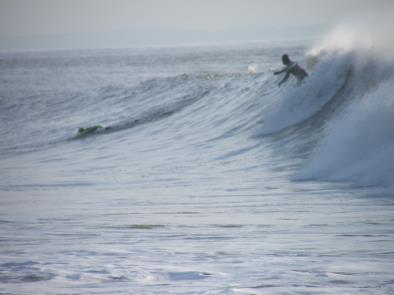
Constructive waves move material up the shore and inland. Large constructive waves move the pebble beaches of places like Newgale inland .
This is what happened when the bus was caught in February 2014 and it took two weeks of heavy machinery to move the beach back in order to be able to repair the road.
It is likely that a new road will have to be built further inland in Newgale and the beach be allowed to destroy the old one.
Pupil Activity
In groups use maps to look at different beaches, use photographs from an image search to see if beaches with a longer fetch are different to beaches with a shorter fetch.
